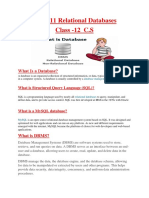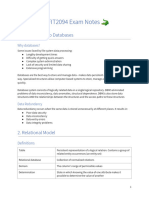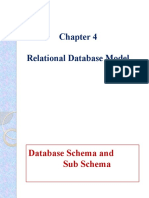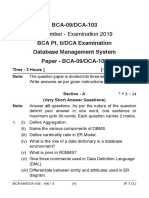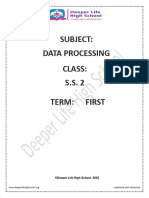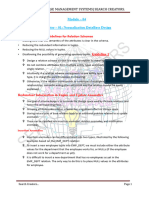0% found this document useful (0 votes)
117 views5 pagesFundamental Database Concepts
The document discusses database concepts including database integrity, normalization, and keys. It explains that database integrity ensures data accuracy and consistency throughout its lifecycle. Normalization involves organizing data to reduce redundancy and maintain integrity by breaking tables into smaller tables with defined relationships. Different types of keys like primary keys and foreign keys are used to uniquely identify records and define relationships between tables to maintain referential integrity.
Uploaded by
chinseuchisomo11Copyright
© © All Rights Reserved
We take content rights seriously. If you suspect this is your content, claim it here.
Available Formats
Download as PDF, TXT or read online on Scribd
0% found this document useful (0 votes)
117 views5 pagesFundamental Database Concepts
The document discusses database concepts including database integrity, normalization, and keys. It explains that database integrity ensures data accuracy and consistency throughout its lifecycle. Normalization involves organizing data to reduce redundancy and maintain integrity by breaking tables into smaller tables with defined relationships. Different types of keys like primary keys and foreign keys are used to uniquely identify records and define relationships between tables to maintain referential integrity.
Uploaded by
chinseuchisomo11Copyright
© © All Rights Reserved
We take content rights seriously. If you suspect this is your content, claim it here.
Available Formats
Download as PDF, TXT or read online on Scribd
/ 5






















